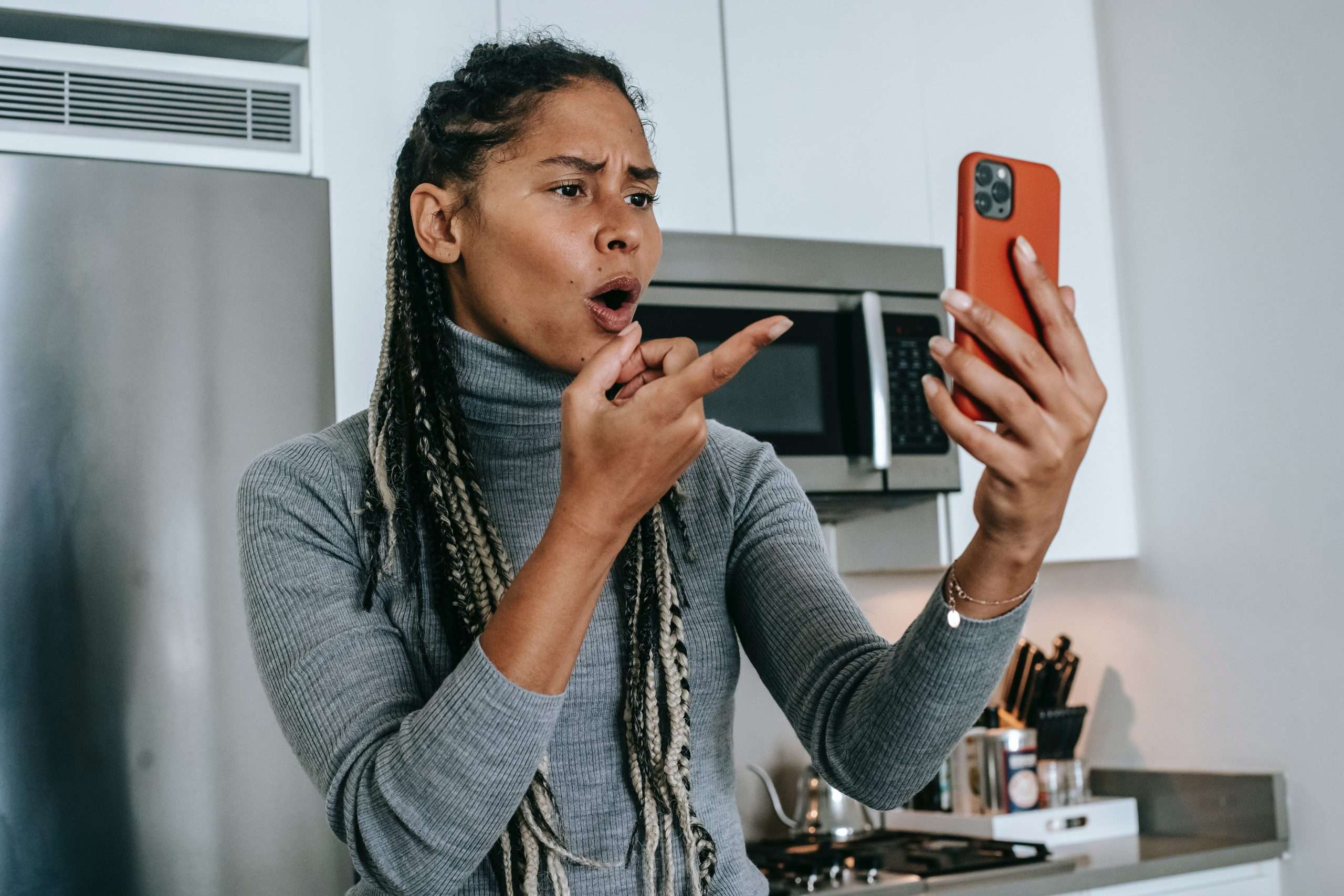The presence of violent imagery in the media has defined many of the most popular stories of our time. Violent imagery is so common in modern storytelling, that engaging with mediums like movies, TV, photography, and print media is almost a tacit expression of consenting to witness violence. What are the mental health impacts of witnessing violent images in media? What are the media’s responsibilities regarding this?
A History of Violent imagery
Violent imagery in media has been a topic of contention in society for as long as some forms of media have been around. Capturing the reality of violence was in some cases vital to developing an understanding of the power of different forms of creating and sharing images. The reality of war, as captured in the photography of World War One, caused an uproar when it made its way back to the home front.
During the Vietnam War, the first moving images of warfare including the horrors of chemical warfare, made their way into people’s homes for the first time. When these images were witnessed, popular support for war effort sunk massively. Having to face and understand the complicated psychological implications of viewing violent imagery in media has been an ever-present need since then.
In today’s world, given social media’s increasingly sticky entanglements with our lives and minds, separating from violent imagery is harder than ever. Due to social media, violent imagery is more pervasive, more graphic, more shareable, and more extreme than ever. In fact, violence is completely ubiquitous online. Distressing images are both now easier than ever to find, and harder than ever to not see. The question of how best to approach and understand the impacts of violent imagery in the media is a uniquely modern problem. No one seems to have the answer, despite the ubiquity of the image of the corpse in nearly every popular TV show and film since more than half a century ago.

Source: Pexels.com
Indifference
Our collective indifference to witnessing violence in the media, fictional or otherwise, displays a worrying disconnection from our fellow humans. It is distressing to witness violence taking place in a country other than your own. This is not only because we are naturally empathetic towards victims. When we witness violence, it is natural to want to step in to prevent it. In this sense it is painful to witness violence and feel powerless to stop it or help in any way.
Due to media phenomena like this, indifference seems like a salve that might spare us the pain of witnessing something we are powerless to change. Despite the adaptations many of us have made due to the sheer ubiquity of violence in the media, it is important that we understand that deeper costs and damages to our mental health are taking place. These costs remain an important reminder of the need to remove violent imagery from our lives for our own wellbeing.
Many have argued that observing violent imagery in media (e.g. violent online games) correlates positively with the expression of actual violent acts towards others in real life. However, this link remains very hard to prove. Two points are relevant in this regard. Media like video games glorify violence (Nayer-Akhtar, 2016), but acting out violent behaviours usually requires some form of reason to validate its existence. This is where ‘othering’ appears (Harmer, et al, 2019).
Media Threats
The violence depicted in media is linked to pre-existent political and social perspectives and movements. There are examples of violence being validated in the form of inciting violence and the ‘othering’ of groups or individuals (Harmer, et al, 2019). This includes validating violence when it comes to judicial or extra-judicial processes or interactions (Gordon, 2019).
Audiences widely access extensively promoted extreme violence on social media platforms. Deliberately targeted hate speech towards different minority groups happens often, in the form of glorifying violence through the filming of physical assaults. Parents disciplining children for certain behaviour turns into content. This allows viewers to validate violence as acceptable, as part of retribution or as corporal punishment (Boda, et al, 2015). Some aim to use said media to fuel political and social discourse by certain agitators and groups (Duncombe, 2020).

Source: Pexels.com
The Problem of Algorithms
Naturally, social media algorithms provide greater exposure to violent videos . Algorithms show more violent posts to people who already seek out such content. This maps onto the idea that an individual’s worldview is corroborated online by viewers and content creators that echo the same viewpoints (Cinelli, et al, 2021). Echo chambers distort discourses because they appear to represent a larger proportion of the public than they really do. Echo chambers are merely spaces for like-minded individuals to gather and connect. However, people caught in echo chambers often instrumentalise their worldviews to alter public conversations in distortionary ways (Moller, 2021).
Similarly, print and visual media from traditional news media to movies also intentionally include violence to differing degrees. Certain movie directors have tailored content to pre-existent audience attitudes (Summers, 2016). Some also will inflame and incite audiences purposefully. When it comes to movies, there has been considerable debate about certain movies which have glorified violence. The horror movie genre has come under scrutiny in particular. There is evidence that exposure to real-life and fictional violence produces physiological effects as well as having effects similar to PTSD. Audiences were found to experience decreased empathy after exposure to high levels of violence (Mrug, et al, 2015).
Othering
Defining Othering
There are social and cultural themes that intersect with hate speech and inciting violence. One of these includes the phenomena of othering (Harmer, et al, 2019). Othering is a way of labelling certain groups or individuals as different or evil. This difference is then instrumentalised to produce violence towards that group and justify that violence as acceptable. Othering is a form that political discourse takes often in times of crisis of turmoil. Groups are othered through repeated dehumanising rhetoric that legitimises violence towards them (Gordon, 2020).
In today’s world, othering often occurs online. The online world also provides the means through which to target and harass scapegoated people and groups. Often, media attention around these issues produces hysteria which is then reproduced in online spaces (Harmer, et al, 2019).
History
During the Middle Ages in Europe, minority groups like Jews, Muslims, and people afflicted with Leprosy were ostracised. They were also targeted and punished due to accusations of plots to kill Christian women or children. Ironically, at this time, the rights of women and children were non-existent, and they were treated largely as second-class citizens. Historically, ‘othering’ has been done to scapegoat groups of people that threaten the society of the majority. Women and children, as figures of innocence and chastity, were equally made scapegoats in these cases, in order to legitimate violence towards Jews and others.
The impacts of violent images on young children are severe. However, it is very hard to argue for the importance of removing violent images from the lives and media diets of children, when the adults around them continue to engage in forms of media where violence abounds. There are few adults around to model a moderate approach. In North America, the UK, and throughout Europe, media has played a major role in producing negative attitudes towards minorities (Kennedy-Turner, et al, 2023).
violent imagery and Mental Health Impacts
The negative impacts that violent images have on mental well-being are extensive. Society’s standards significantly diminish when violence is validated and promoted by the media (Glaisyer, et al, 2017). In online spaces, the potential for pathological mindsets to form due to widespread distribution of violent content is massive.
While most criminal charges punish actual perpetrators of violence or crime, the majority of instances in which violence is incited or promoted online go without prosecution. There is a significant need to take action (Zarnoufi, et al, 2021) so that negative consequences are reduced.
Studies have shown that children exposed to political violence experience emotional distress. This exposure can also alter the mental conditions of the child. Sometimes, children exposed to violence adopt ‘aggressive script rehearsal’ (Huesmann, et al, 2016). The impacts of exposure to judicial/law enforcement and community violence on male youth of colour in the US poses significant public health risks (Chen, et al, 2020). In another study, broader exposure to significant real and fictional violence was found to result in increased PTSD and decreased empathy (Mrug, et al, 2015).

Source: Pexels.com
Violent Imagery and Extra Judicial Punishment
A history of having witnessed violent images is sometimes used to legitimate corporal punishment. Personal histories of having witnessed violent images in childhood continue into adulthood. This implicates our prison systems, corrective services, as well as police brutality (Boda, et al, 2015). Witnessing extensive violence in videos online produces a higher likelihood of offence. These offences are often partially politically motivated and partially criminally motivated. Physical assaults, retribution-based justice and brutality by police are commonly depicted in such media (Mengu, et al, 2015).
Violence in media, along with a normalisation of that violence, often results in childhood corporal punishment. When children are physically punished for bad behaviour or are otherwise physically disciplined, often there is a presence of violent images in the home (Taylor, et al, 2016). Violent images also justify the use of corporal punishment more popularly. Corporal punishment is a medieval parenting practice that should not have any grounds for legitimation. In this sense, anything that could be used to legitimate corporal punishment, including violent images whether they are real or fictional, should be eliminated.
Are Social Media giants Responsible?
Public executions were a part of daily public life in late 19th century Europe. Interestingly, often the reason that a crowd would disperse was the savage end of the execution. The sheer impact of witnessing the violence was a key motivation to disperse and return to one’s other activities.
In a similar way, when social media companies allow violent content to exist, and when movie studios allow the production of movies that glorify violence, there are consequences. There is a link between incarceration rates and brutal prison conditions in the US, and the increase of more violent movies being produced on a larger scale in the 1980s and 1990s.

Source: Pexels.com
Psychopathic influences seek to have shock value and enable violence to exist through promotion (Nevin, 2015). It is the duty of social media giants to prevent violent content from being distributed. Penalties need to exist for individual accounts that distribute violent material. This should include the hate-filled glorification of, or promotion of violence (Zarnoufi, et al, 2021). The approach that Twitter took to regulate hate speech in the past is one example of a common sense approach. However, strategies should be adopted to include all forms of hate-filled, or violent content.
why Is it essential that we focus on this issue?
Violent imagery is an extremely adverse and problematic aspect of society that needs to be curtailed. Media giants must take responsibility to reduce the distribution of violent images online.
We need new institutional standards to regulate and ensure better promotion of mental health. We also need new institutional standrads to prevent violence, brutality, and human rights abuses including images of violence. It only stands to reason this change needs to be mirrored in social discourse. Social discourse is heavily influenced by the media. Allowing pathological mindsets to pollute social discourse only allows for an increase in violence in society. By eradicating these issues, better facilitation of institutional integrity can occur across the board.
THRIVE Framework
MODIFY: The THRIVE Project invests interest in issues fundamental to the integrity of our society. Apart from sustainability, this also means examining issues related to human rights abuses. Safeguarding human well-being in all domains is paramount to THRIVE’s mission. Thrive strongly supports an inclusive society where everyone can live safe, mentally healthy lives, and thrive with a strong sense of self.
To learn more about how The THRIVE Project is researching, educating and advocating for a future beyond sustainability, visit our website. You can follow our informative blog and podcast series and learn about our regular live webinars featuring expert guests in the field. Sign up for our newsletter for regular updates.























